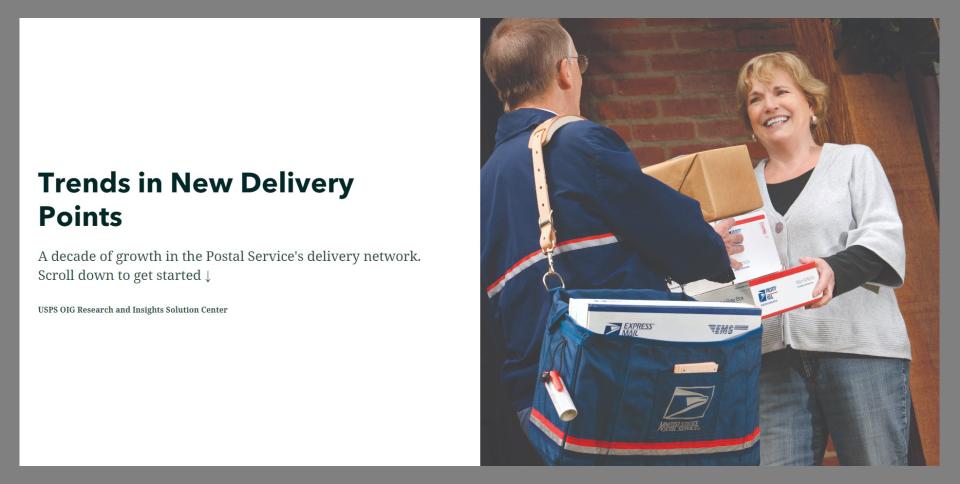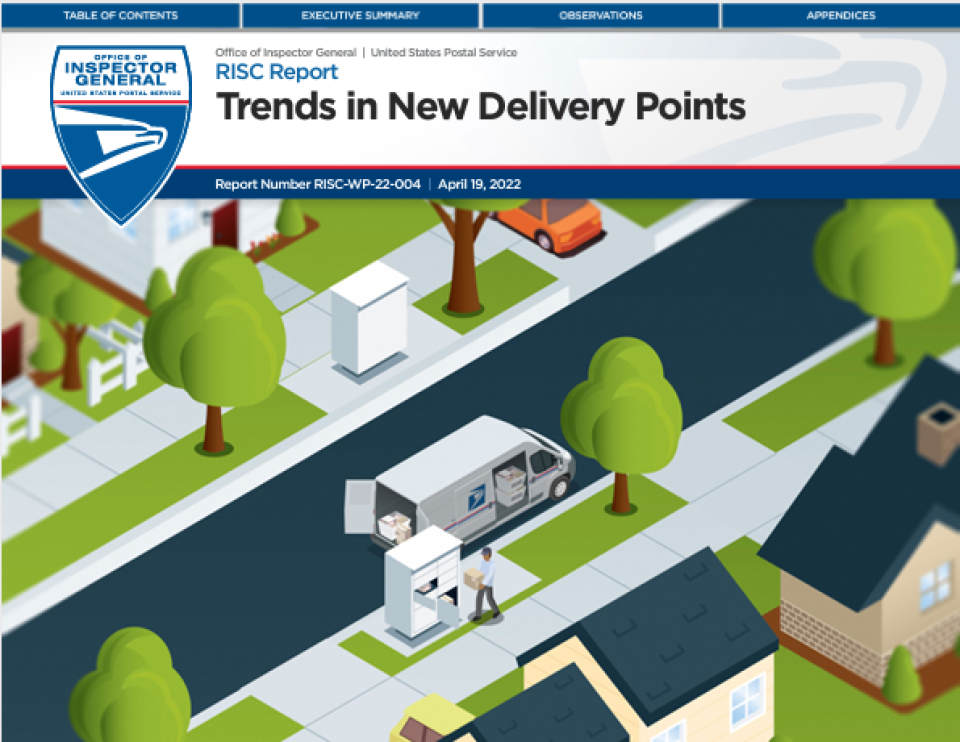Trends in New Delivery Points
The OIG analyzed delivery point trends from fiscal years (FYs) 2011 through 2021. Click on the Story Map image below to explore trends in different parts of the country.

- Since FY 2021, the number of delivery points on carrier routes grew by 10 percent.
- The south and west grew more rapidly than other parts of the country, and growth on rural postal routes far exceeded growth on city routes.
- Centralized delivery points increased by 23 percent since FY 2011, driven by growth in cluster box units (CBUs).
- It is important for the Postal Service to accurately report and track the number of delivery points in the network as their count affects the ability of the Postal Service to increase prices for certain mail products.
In FY 2021, the U.S. Postal Service’s delivery network consisted of 163.1 million possible addresses, with more addresses – or delivery points – added every day. Delivering to every address is part of the Postal Service’s Universal Service Obligation (USO). In this white paper, the OIG sought to identify trends in delivery points and review the process for adding, maintaining, and removing delivery points from the network.
Delivery point growth did not occur evenly across the country. The south and west experienced more growth than other parts of the U.S., with some states adding delivery points at more than double the national average. Delivery point growth on rural routes far exceeded growth on city routes, and cluster box units (CBUs) were the fastest-growing mode of delivery. Since FY 2011, more than four million delivery points were removed from the network.
We identified several areas of opportunity for the Postal Service to improve delivery point management processes, including clarifying CBU maintenance responsibility and establishing permanent growth manager positions across the agency. Continuing to promote centralized delivery in new developments can help the Postal Service control delivery costs. However, growing parcel volumes and packages that are too large to fit CBUs may require door delivery and erode some of the cost savings.
Finally, recent changes incorporate the number of delivery points into Postal Service pricing formulas. It is important for the Postal Service to accurately track and report on the number of delivery points in the network and ensure oversight of delivery point management.
Joy Sanzone, Sophie Tripp, Alexandre Vaillancourt, and Paola Piscioneri contributed to this report.

